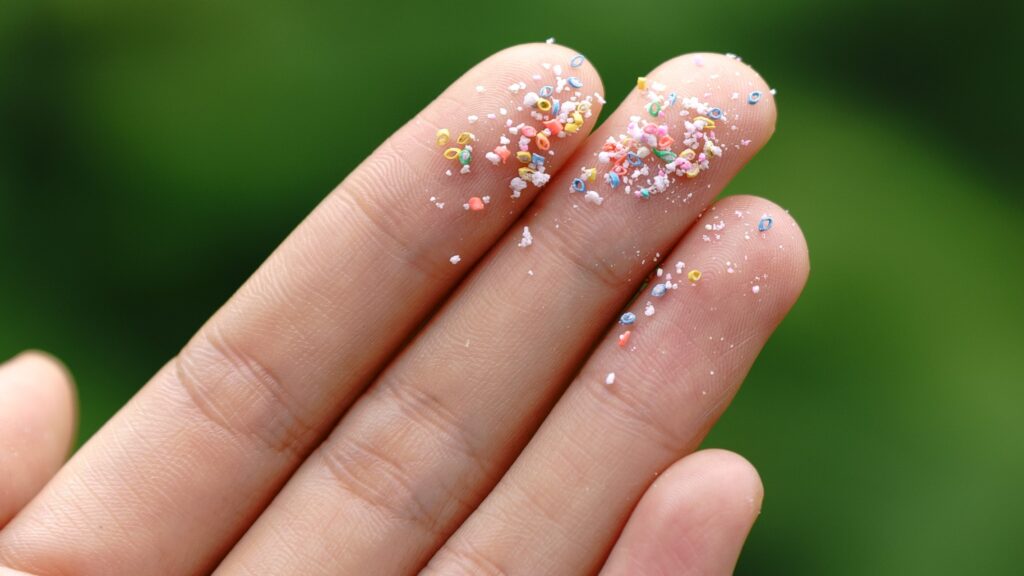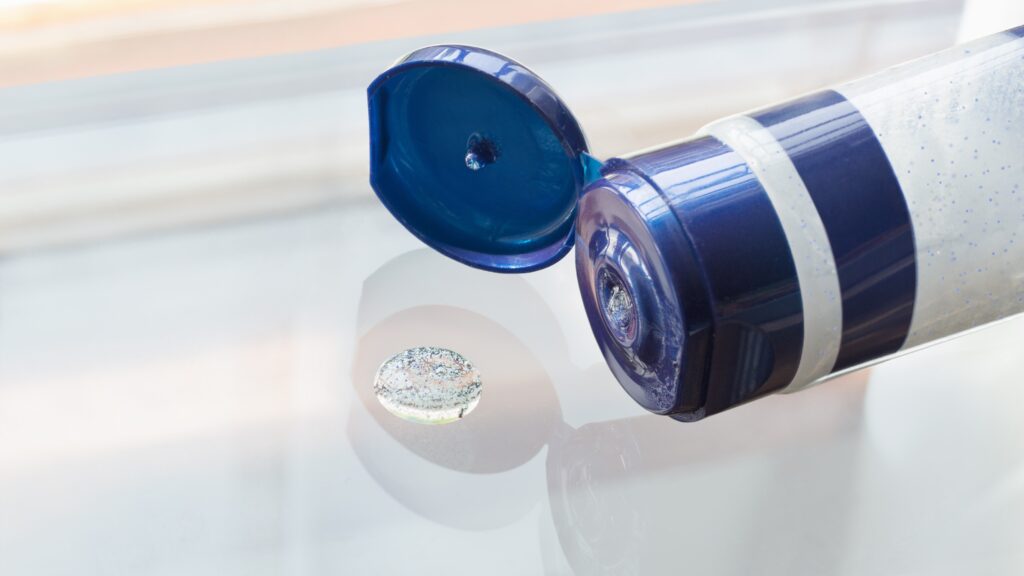In the United States, plastic waste has become ubiquitous to everyday life. Look around where you are right now. You might see plastics or microplastics in your clothing, packaging, furniture or bathroom products. You’ll probably easily find the malleable, durable, lightweight material all around you in some form or another.
According to the National Oceanica and Atmospheric Administration (NOAA), “plastic is the most prevalent type of marine debris found in our ocean and Great Lakes.” Plastic waste comes in all sizes, some of which can be recycled and some that cannot. And, while we absolutely encourage recycling and proper disposal of large, visible plastics, we’re also focused on reducing microplastics and microbeads in wastewater.

What are microplastics?
Plastics debris comes in all shapes and sizes. Microplastics are tiny particles of plastic that range from five millimeters in length (about the size of a sesame seed) to micrometers (less than the width of a human hair.)
Primary microplastics are small plastic particles that are directly released into the environment. Secondary microplastics enter the environment from the gradual breakdown of larger plastic waste into smaller pieces once exposed to the marine environment. And, there are some called microbeads, a type of microplastic that are small manufactured plastic beads for use in health and beauty products. Due to their small size, microbeads can work through wastewater treatment systems and into our waterways, aquatic life and our own bodies.
Where are microplastics and microbeads found?
Fortunately, the Microbead-Free Waters Act of 2015 prohibited the manufacturing, packaging and distribution of rinse-off cosmetics containing plastic microbeads in the U.S. by July 1, 2017. However, the definition of microbead is very narrow, and many manufacturers have found a loophole. And many synthetic polymers that are liquid, soluble and biodegradable are not covered by the act. So, while the use of microbeads is banned, many other microplastics in personal care products can still enter the environment.

Specific health and beauty products that might contain microplastics include exfoliants, scrubs, toothpastes, shampoos, sunscreens, lotions, deodorants, cosmetics and make-up, glitter eye shadows, lip glosses, specialty creams, nail products, and more.
Be sure to check the ingredient list of beauty and healthcare products in your home, even in products that don’t explicitly state that they contain exfoliants. Personal care products may not have microbeads, but may contain microplastics labeled as Polyethylene (PE), Polypropylene (PP), Polyethylene terephthalate (PET), Polymethyl methacrylate (PMMA) or Nylon. For example, if a product has polyethylene high on the ingredient list, it almost always has microplastics within.
Can the district remove microbeads during treatment?
Unfortunately not. When microbeads get washed down the drain, they’re difficult for wastewater treatment plants and sanitation systems to remove because of their buoyancy and resistance to coagulation (a process where particles are made to clump together, so they can be settled out of the wastewater stream). Since microplastics aren’t biodegradable, once they get into the environment, they stick around for a long time.
How can i help?
The best way to help is to try reducing your microplastic pollution footprint.
- Look for the Zero: Purchase products from companies that are 100 percent plastic-free.
- Check your products: Look at the ingredients on beauty items. Avoid Polyethylene (PE) or “polypropylene” even in products that don’t explicitly state that they contain exfoliants.
- Follow the three Rs: Reduce plastic use, reuse plastic products and recycle plastics.
- Go natural: Choose products that contain natural ingredients instead of manufactured.
It is everyone’s responsibility to take care of the water you use before it gets to the treatment plant. While we clean water to the best of our ability, we cannot remove everything, like microplastics, from the wastewater that arrives at the plant. Do your part to protect the environment!
Learn more about pollution prevention, resource recovery and how important it is to respect every drop.






